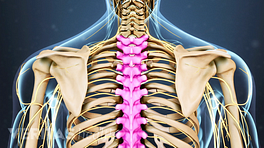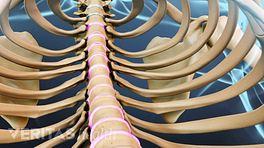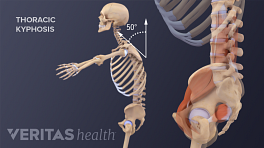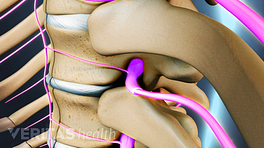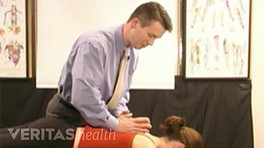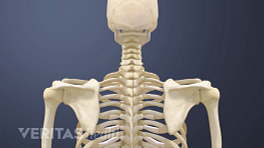Sometimes the cause of upper back pain is easy to find. And other times, it's more mysterious.
For example, poor posture can lead to upper back muscles becoming longer, weaker, and more susceptible to fatigue and pain. In general, when the upper back is put through more stress than it can handle, muscle and ligament strains can occur and joints may become damaged.
High-energy impacts can also cause damage to the spine and the surrounding muscles and connective tissues. If upper back pain develops as a result of a high impact collision or fall, seek medical attention immediately.
Some other causes of upper back pain include compression fractures, herniated discs, and osteoarthritis. Weakening of the vertebral bones, such as from osteoporosis, can lead to tiny fractures in the thoracic spine. This condition is more common in older adults.
Sometimes a disc in the thoracic spine or upper back will break down and herniate, leaking inflammatory proteins that cause pain. But this is more likely in the cervical or lumbar spine.
And finally, wear and tear may lead to osteoarthritis. This involves the breakdown of protective cartilage and bone grinding against bone, causing inflammation and bony overgrowths. Many other causes of upper back pain are possible, such as infections, tumors, or severe deformities.
See your doctor if upper back pain is accompanied by other troubling symptoms, such as pins-and-needles tingling in the chest or abdomen, reduced coordination, fever or chills, and/or a severe headache.
Veritas Health provides unbiased, comprehensive, and trusted content, empowering people to make informed decisions regarding their health.

